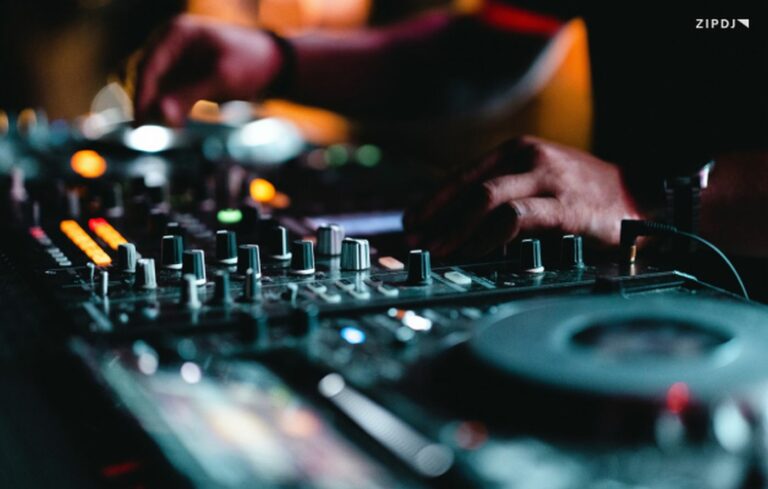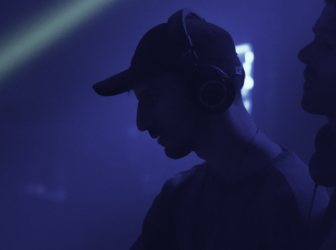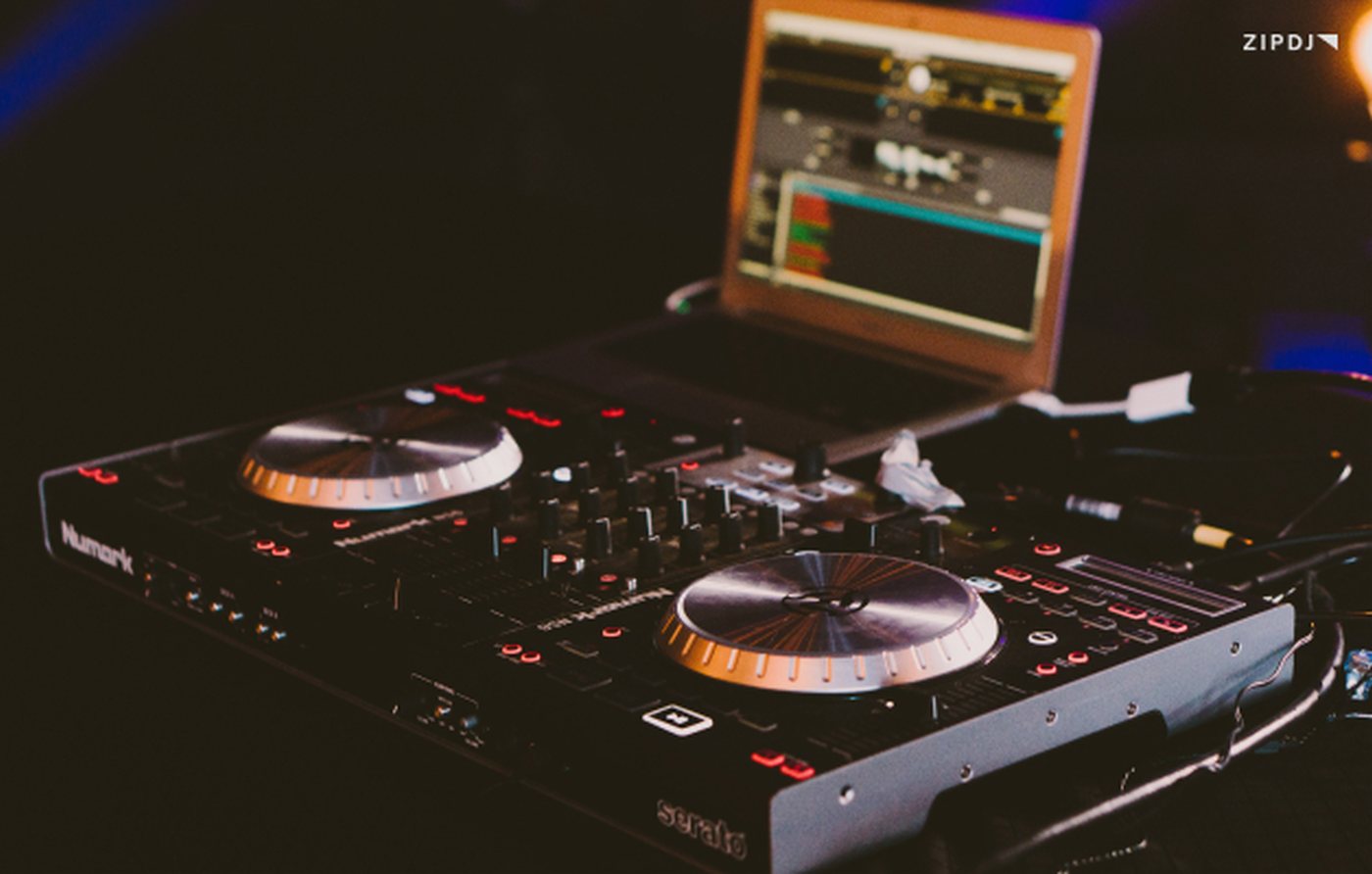Home DJ Setup Ideas: Build Your Ultimate Rig In 2025

Mastering the essential DJing skills requires a great home DJ setup that allows you to practice whenever you like.
Choosing the best DJ controller and software and building a digital music library are just some of the things you’ll need to consider.
To help you invest in the right DJ gear, this guide covers everything you need to know when putting together a DJ setup.

Home DJ Setup Ideas: Build Your Ultimate Rig In 2025
There is a broad range of essential DJ equipment needed to get up and running, and choosing the best gear can be a minefield.
From beginner DJs to established pros, this guide covers everything you need to know about what makes a killer home DJ setup.
So, let’s dive into the details and explore everything you need to know to build your ultimate DJ rig in 2025:
1. DJ Controller
A DJ controller is the most important part of any home DJ rig and is the piece of equipment you’ll have the most hands-on experience with.
There are hundreds of DJ controllers on the market, so you must understand what they can do before parting with your hard-earned money.
Spend time researching the best DJ controllers so you have a clear understanding of the various tools and features they have to offer.
On a basic level, a DJ controller allows you to establish cue points when mixing tracks and using the crossfader or EQ to blend them.
Most DJ controllers have a three-band EQ covering low, mid, and high frequencies, which can be used to fade in and out percussion and basslines.
Additional features you might want from a DJ controller include sound effects such as reverb, filters, flanges, and other distortion effects.
The ability to use digital files such as samples and give you more control over your DJ sets is also worth considering when choosing a DJ controller.
If you’re considering spending a significant amount on a top-flight DJ controller, you should inquire about testing one in person before you buy.
A great DJ controller is a long-term investment that sits at the heart of the digital DJing experience, representing a continual learning curve.
2. Laptop
If DJ controllers are the heart of the DJing process, your laptop represents the brain of the operation where all your digital music is stored.
While it can be tempting to skimp on investing in a powerful laptop when first starting, this can cause headaches down the line.
One of the biggest DJ pain points is having their laptop give in on them mid-DJ set, so you’ll want one that’s reliable and free from bugs.
To be sure your laptop is up to the task, you should first check to see if it meets the specification requirements of your chosen DJ software.
It’s also worthwhile performing regular checks for bugs and malware to make sure issues don’t arise that could otherwise have been avoided.
As technology continues to develop in the DJing sphere, it pays to stay in the loop to see how you can take advantage of these trends.
For example, Apple has been taking strides in innovations for their laptops, revolutionizing how they can be incorporated into sets.
With that said, you don’t need a high-powered laptop for DJing, provided it can handle your DJ software and has plenty of space for music.
3. DJ Software
Once you’ve selected a laptop to control DJ software, it’s time to invest in the software itself to manage your music and playlists.
There are several popular options when it comes to DJ software, with Serato DJ Pro widely used by professional DJs in clubs.
While this is a good option for those considering a DJ career, Pioneer’s Rekordbox and Native Instruments’ Traktor are also worth considering.
Once you’ve weighed the pros and cons of Traktor vs. Serato, you can install the software and start learning how to use it.
Bear in mind that certain DJ controllers have restricted compatibility with DJ software, so you’ll need to make sure your hardware is viable.
For example, Native Instruments produces a range of controllers that are dedicated exclusively for use with their software.
Using DJ software is easy to learn, and it can help you build your DJ sets with a range of information, such as track length and waveform data.
There are plenty of great DJ tutorials for beginners you can use to help master the basics of your DJ software and develop your skills.
4. Headphones
Once you’ve invested in your DJ controller and software, you’ll need to pick up a pair of DJ headphones to use when cueing up tracks.
DJ headphones connect to your audio interface and are used to listen to an incoming track before you introduce the next track into your mix.
As such, you should opt for headphones with a closed-back design to prevent unwanted distractions from surrounding ambient noise.
Avoid using in-ear headphones since these are prone to falling out easily, particularly when you’re active behind the decks.
While some of the best DJ headphones can be expensive, you don’t need to get high-end models if you’re DJing solely at home.
As you improve over time, you can upgrade to professional-level headphones and keep your old ones as a backup in case of emergency.
5. High-Quality Speakers
It can be tempting when first setting up a home DJ rig to save money and use your computer speakers to play music through.
While this can be a cheap alternative, the sound quality they deliver is sub-optimal and won’t showcase the production values of your tracks.
To get the best possible audio performance from your music, you’ll need to pick up a pair of quality speakers to use in your rig.
Investing in the best DJ speakers will vary depending on the size of the room you’re DJing in and your available disposable income.
If you’re considering having a go at music production, it’s worth considering buying a pair of studio monitors and killing two birds with one stone.
These will give your music a pleasing and even sound reproduction across all frequencies, whether using digital music or vinyl records.
Studio monitors often come with a built-in amplifier, so you won’t have to buy a separate amp to connect these to your controller.

6. Digital Vinyl System (DVS)
A digital vinyl system is a common compromise between a digital setup and a traditional turntable rig that uses records for mixing.
It’s a popular system for DJs who enjoy mixing hip-hop, one of the best music genres for DJs willing to try scratching.
The advantage of using a digital vinyl system is that you don’t need a large library of records and can use your digital music files.
A single, dedicated record is instead used to act as a platform for audio files but retaining the tactile nature of mixing with vinyl.
This makes it a great bridge between traditional vinyl DJing with two turntables and modern, digital-only DJ mixing.
If you’re considering expanding your DJing style to incorporate scratching, using a digital vinyl system is well worth considering.
There are also exciting new developments in the world of digital vinyl systems, with leading companies coming up with innovative solutions.
For example, Pioneer’s digital-analog hybrid turntables are set to potentially change the game for those interested in this mode of mixing.
This system promises the best of both worlds, allowing vinyl purists to expand into digital DJing with everything together in one box.
7. Turntables
While most contemporary DJ gear is built around digital mixing, there are plenty of DJs who prefer the traditional vinyl and turntables method.
Indeed, the history of record players is deeply intertwined with the art of DJing, with the technology often evolving in tandem with DJ needs.
There are several advantages and aspects of DJing with two turntables that make it so appealing and worth considering for your setup.
DJing with vinyl has a tactile quality that digital mixing is unable to match, no matter how good the jog wheels on DJ controllers become.
It’s also more challenging, requiring beatmatching by ear using the turntable’s pitch controls without the assistance of BPM counters.
DJing with traditional vinyl also opens up more opportunities for discovering rare music from websites such as Discogs or thrift sales.
An impressive collection of records is much more of a talking point than a hard drive loaded with digital files and something worth cherishing.
8. DJ Mixer
If you’re going the traditional route and mixing with vinyl records on turntables, you’ll need a separate DJ mixer to use with them.
Without a dedicated DJ mixer, you won’t be able to learn the basic DJ scratch techniques such as the flare and crab scratches.
Several notable brands manufacture outstanding mixers that can be used alongside a pair of turntables for DJing.
Vestax is among the industry leaders when it comes to mixers for scratching, with responsive crossfaders and EQ controls.
DJs focused on house, techno, and other dance music genres can get a range of unique effects by using a mixer from Allen and Heath.
These mixers, once widely used in the biggest nightclubs, reflect the company’s roots as manufacturers of studio mixing desks.
Of course, you don’t have to spend a fortune on a DJ mixer, and there are many budget-friendly alternatives available on the market.
The second-hand market is also thriving since many DJs use controllers with mixers incorporated into their designs.
9. Cables
To connect all of your DJ gear, you’ll need the necessary cables to bridge your controller, speakers, and software.
Some of the core cables you’ll need include phono connections to link your controller to an amplifier, along with speaker cables.
You’ll also need a selection of USB cables to hook up your laptop to the controller and transfer music data to these controls.
Cable management is as important as knowing how to clean your DJ gear, so it’s worth picking up some cable ties to keep everything tidy.
You should also invest in duplicate cables to use in the event of a system failure that might otherwise cut your DJ set short.
While this isn’t as catastrophic as losing connection performing in a club, the best DJ setups are only as good as their weakest link.
10. Music Collection Storage
Digital music files typically take up a small amount of data storage space, but as your collection grows, this can soon add up.
As such, you should consider investing in a portable hard drive to segregate these files from your other computer programs.
This will also give you the option of taking your music collection with you and using it when playing on other people’s DJ equipment.
Once you’ve selected the method you’ll be using to store your music, learn how to organize your DJ playlists so you can easily find tracks.
If you’re using physical media for your DJing, you’ll need to pick up appropriate storage to keep these free from dirt and dust.
DJs who use CDs often pick up storage wallets, allowing them to quickly access each CD without having to go take them from their cases.
For vinyl records, there’s an extensive range of record bags to choose from, many of which come with additional pockets for accessories.
Summary
So, that’s a wrap on this complete guide to building the ultimate home DJ setup, from the core hardware to overlooked accessories.
As your DJing journey evolves, you can work on upgrading these components and exploring more advanced controllers and features.
The more your skills develop, the stronger your chances of transforming your bedroom DJ hobby into paying gigs at local bars and nightclubs.
Complement your home DJ studio with a ZIPDJ subscription and access the latest hit releases and remixes for your DJ sets.
Not a member ?
Join Today for Unlimited Music Downloads. Visit zipdj.com for more information.



